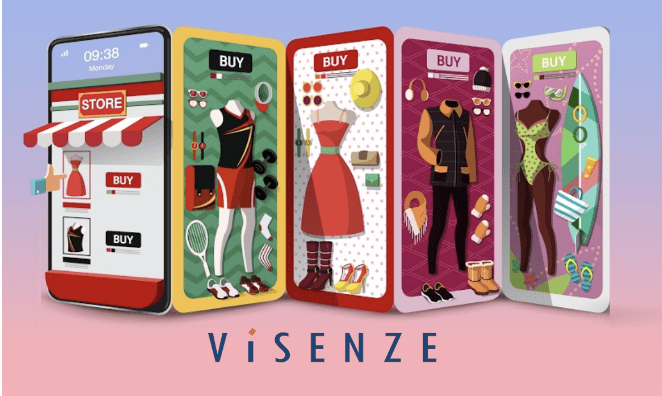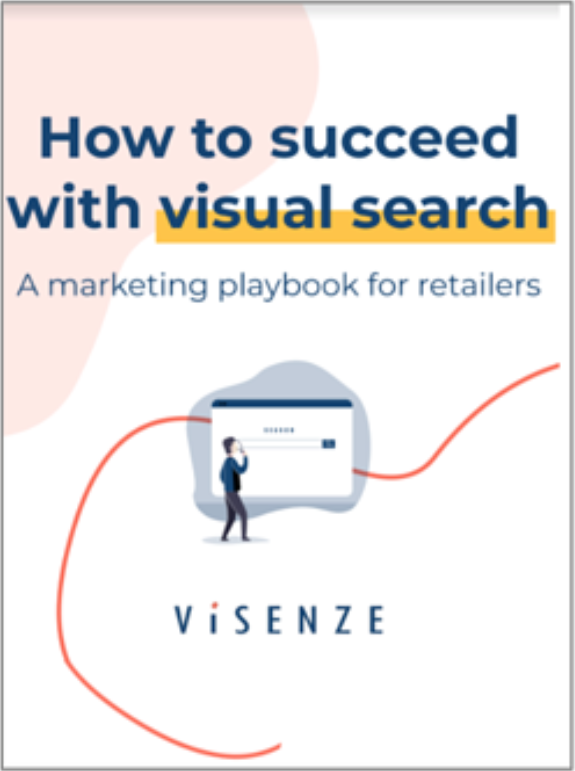- June 04 2019 | 7 mins read
How to increase conversions with visual search in e-commerce
One of the common concerns about visual search is that while it can increase clickthrough rates and average order values on e-commerce sites, this growth doesn’t quite cross over into conversion rates.
What’s happening?
Although visual search is still a nascent technology, it holds huge potential for the e-commerce industry. In fact, the gap between image recognition and sales may not have to do with visual search itself, but with the way people are using it.
For one, we know the problem has nothing to do with an aversion to the technology. Our research tells us that people, at least millennials, want the ability to search by image.
This desire also explains the popularity of visual search on social media platforms like Pinterest, where Lens, the network’s visual search technology, drives 600M image searches each month.
Lens also helps drive the conversion rate of image-based Pinterest Ads, which hover at 8.5 percent.
The key is figuring out how to integrate visual search into your e-commerce site so that it augments the online shopping experience. Below are a few strategies to help you do just that.
1. Optimize your online inventory – Relevancy is everything
Research by L2 shows that only 8 percent of retailers have visual search built directly into their web inventory. Since then, retailers like Target have integrated visual search into their app and website.
Several fashion brands and retailers have followed suit. Brands like Tommy Hilfiger have rolled out apps with built-in image recognition. Tommy Hilfiger’s app allowed users to take photos of items modelled at a runway show and upload these images on the app’s visual search engine, which then directed users to the items on sale on the app.
It’s this kind of seamless integration of visual search into an online store’s web inventory that proves crucial in its ability to drive conversions. For example, we know that the number of clicks-to-purchase can influence e-commerce abandonment—the fewer hoops an online shopper has to jump through, the higher the chances that a purchase will happen.
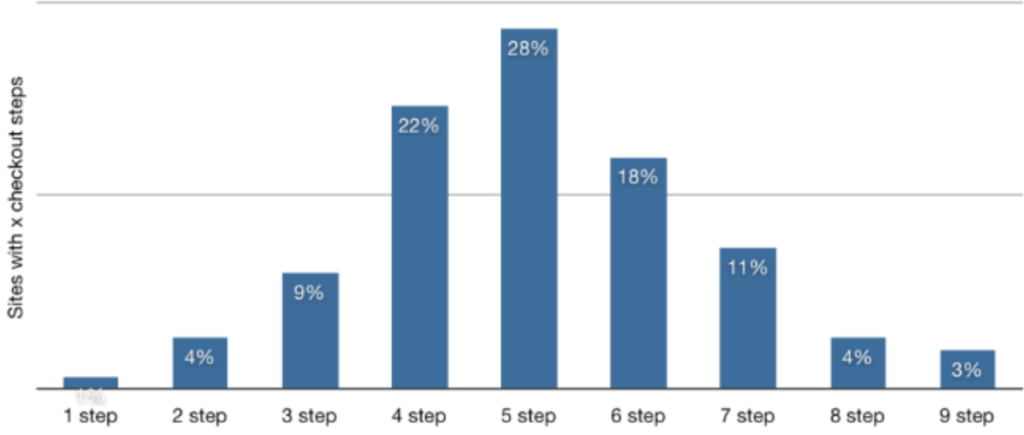
Providing a visual search function that connects shoppers directly to relevant product pages can be the key to optimizing your customers’ e-commerce experience for conversions. One way of doing this is by ensuring each product in your inventory has a relevancy of at least >0.9 to the search query. This involves having a combination of ideal inventory size and proper tagging, which in turn, drives the efficiency of the machine learning computer vision in use.
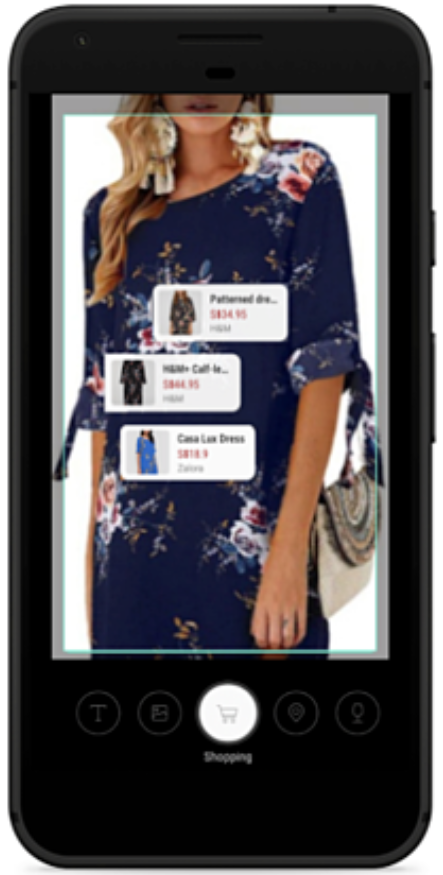
The more human/manual dependance in the tagging process of your visual inventory, the harder it becomes to not only scale, but to refine your taxonomy to learn and optimise how customers find the right products. This goes deeper than simply the naming of different styles and cuts to clothing but can also factor in things such as browsing by ‘occasion’ which can be deemed subjective and evolve over time, as is common in the world of fashion. Being able to pivot, action and optimise how your products are interpreted and tagged at scale is a huge part of the success within visual search. Always remember, the more relevant a product is to the user’s initial search, the greater the chance of conversion.
2. Visually similar product recommendations – more than just ‘nice to have’
Another conversion rate optimization technique is to ensure visually similar product recommendations on product landing pages are also relevant to the product being searched for. Shoot for visually similar products with variations in price, likeness, and colour, which will ensure that online shoppers don’t hit dead ends and are constantly exposed to products that are likely to pique their interest.
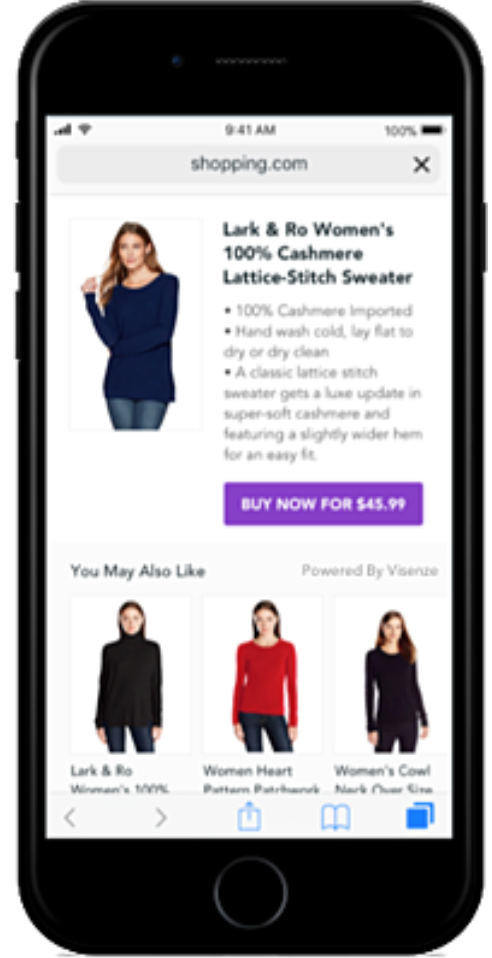
In fact, a study by Barilliance found that personalized product recommendations accounted for 31 percent of revenue in best-performing e-commerce sites. By comparison, the global average was 12 percent. Furthermore, online shoppers who click on product recommendations are 5.5x more likely to convert than those that don’t.
Again, your AI and machine learning solution will be instrumental in helping customers understand how visual search can aid them in their shopping experience.
Want to know how visual search can drive ROI for your business?
3. Market your visual search tool
What your customers don’t know exists, they won’t use. E-commerce giant Myntra understood this. That’s why, only last month, the company embarked on a marketing campaign to bring alive the joyful experience of shopping for fashion on the brand’s platform with the use of ViSenze visual search technology. The campaign has already received over 9 million views and counting and has contributed to mass adoption of the technology and in turn, a steady climb in click-to-conversion rate!
Simply put, an online retailer’s visual search feature can only drive conversions if people know about it. For more marketing ideas, check out these strategies for promoting a visual search tool.
4. Educate users on how to use visual search
Aside from marketing your site’s visual search feature, it’s just as important to teach users how to make it a part of their shopping experience. The devil is in the details; visual search needs to be easy to find and easy to use on both your e-commerce site and app. And then, of course, you have users who are completely new to online shopping—their ability to search for items by image can be the key to turn them into loyal customers.
If you want people to use your e-commerce visual search feature to complete a purchase, they first need to know how to use it. This is where instructional materials can come in, providing the necessary information for people to use the tool and enhance their shopping experience.
5. Smart integration is the key to driving conversions with visual search
While companies are still exploring and testing visual search capabilities to unearth its full potential, the technology offers tremendous promise for the future of e-commerce.
As consumers continue to demand a smooth and seamless online shopping experience, online retailers and merchants need to embrace new technologies geared towards helping shoppers find the product information they want.
But to take them from simply finding that information and making a purchase? That requires extra strategic measures, such as helping users figure out how to use the technology and making sure it connects them to the products they want to see and buy because if you aren’t, you can be sure your competitors will be.
Download our latest free eBook
If you’re interested in exploring how visual search can enhance your customer’s shopping experience both through social and beyond, get a free trial with ViSenze today.

 Blog Home
Blog Home 